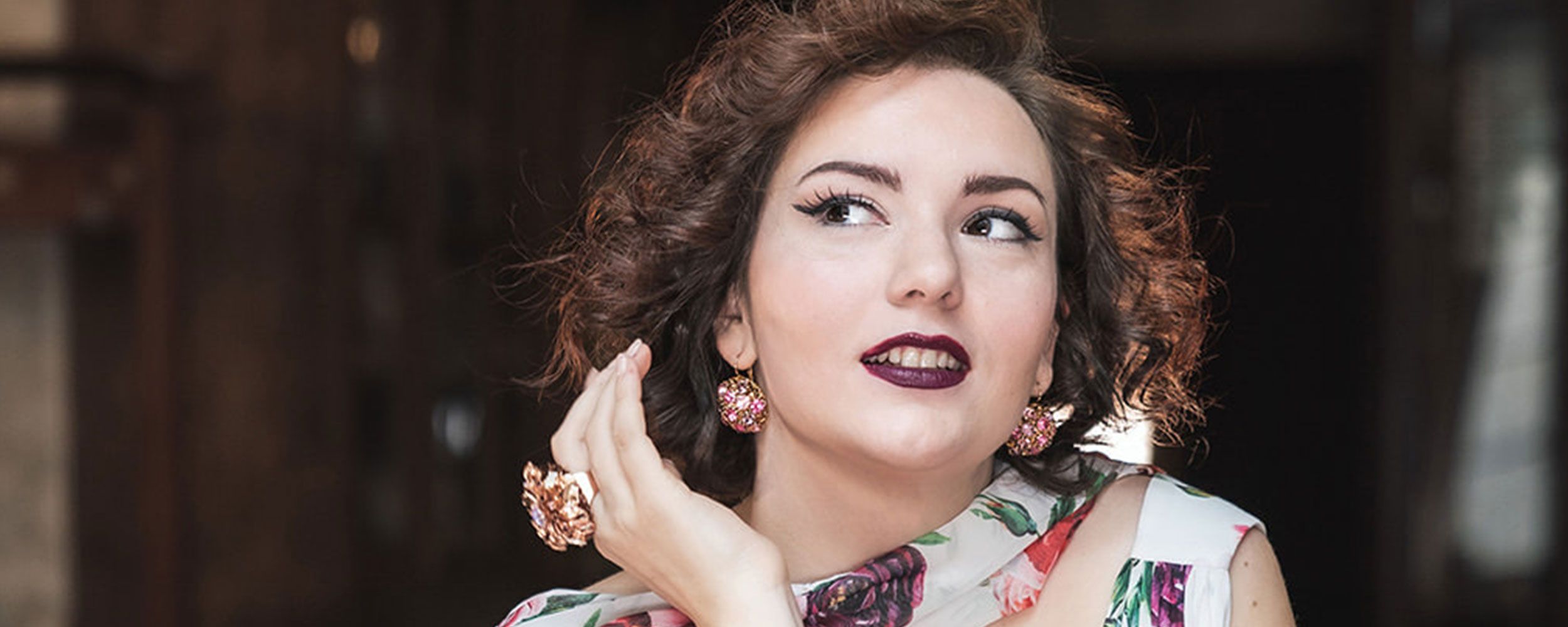Mezzo-soprano Teresa Iervolino in concert: Sunday, 29 September 2024 at 5 pm

Sunday, Sept. 29, 2024 at 5 p.m., Zubin Mehta Hall, continues the Maggio singing concert series with mezzo-soprano Teresa Iervolino: Prima Donna, Primo Uomo.
Orchestra of the Maggio Musicale Fiorentino.
On the podium Matteo Parmeggiani.
Arias and symphonies by Gioachino Rossini and Giuseppe Verdi.
Florence, 27 September 2024 – On Sunday, Sept. 29, 2024, at 5 p.m., in the Zubin Mehta Hall, the cycle of singing recitals at the Maggio continues: after the concert based on the “Delirio” CD with soprano Jessica Pratt, it is Teresa Iervolino's turn with Prima Donna, Primo Uomo. The singing recital, with maestro Matteo Parmeggiani on the podium conducting the Maggio Orchestra, anticipates the release of a CD of the same name (directed for recording by Giacomo Sagripanti) to be released soon on the Dynamic label.
“The concert,” Teresa Iervolino explains, ”is a symbol of our CD, and its particularity lies in the fact that it interprets roles both written for men and written for women who dress in men's shoes. 'Joan of Arc,' for example, is a figurative (and musical) representation of a woman who, in order to gain courage and fight, must dress in the shoes of a man.”
Iervolino, an artist always well-received by Maggio audiences, busy until Sept. 27 with performances of “La Cenerentola” in the Sala Grande, is a talented and virtuosic bel cantoist of our times and tackles in this concert - and on the CD - arias by Gioachino Rossini and Giuseppe Verdi written for male voice but interpreted by female voice. On the podium is Matteo Parmeggiani, who will return again to Maggio for a later singing recital this fall with baritone Nicola Alaimo (Nov. 3, 2024) in a concert featuring arias and symphonies by Gaetano Donizetti.
The pieces presented - in order of performance - are thus taken from Gioachino Rossini's Semiramide, Ernani by Giuseppe Verdi and then Rossini again with the cantata Giovanna D'Arco for voice and orchestra (orchestration by Luca Giovanni Logi).
The first piece is taken from Rossini's opera Semiramide and is Arsace's sortie aria, “Eccomi alfine in Babilonia,” articulated in the four-part form of recitative, cantabile, mezzo tempo and concluding cabaletta, presents the condottiero returning to his homeland after a long time as he recalls the day he met Azema and fell in love. Almost a decade after Semiramide, in 1832, Rossini composed the cantata Giovanna d'Arco for alto and piano (which closes the concert) in Paris. The cantata, on a text by an anonymous author, is divided into two broad recitatives followed by two arias. The Maid of Orleans, who denies her own nature to fight as a man with the French army, is portrayed in the recitative as she reflects on the importance of her warlike mission. In the aria that follows, her thoughts run to her mother, remembered fondly. But here are returning in the second recitative the baleful visions heralded by the angel of death and which in the second aria take shape in increasingly flowery and virtuosic writing. The aria, on the other hand, presented mid-concert, “Oh, de' verd'anni miei” from Giuseppe Verdi's opera Ernani, is taken from the third part of the opera in which Charles, hidden in the dungeon that guards Charlemagne's tomb, waits to reveal himself in order to foil the conspiracy hatched against him. Charles, who will become the future emperor, meditates on the fleeting enchantment of his past youth and the important task to which he is about to be called. A borderline case, but not an isolated one, of the versatility of some legendary performers of the nineteenth century, capable when needed of lending their voices not only to young condottieri but also to decidedly more virile characters, is that of contralto Marietta Alboni, who in 1848 in a London production of Verdi's Ernani (an opera written for La Fenice Theater in Venice in 1844) even played the role of Charles.
During the concert, Maestro Parmeggiani will conduct the symphony from Rossini's Elisabetta, regina d'Inghilterra and Verdi's Luisa Miller.
The opening symphony from Elisabetta, regina d'Inghilterra an opera seria that debuted at the San Carlo in Naples in 1815, is another example of ambiguity in music. In fact, it was not written specifically for the occasion but taken from Aureliano in Palmira, an opera seria staged at the Teatro alla Scala in December 1813. But the reuse of the symphony was not yet concluded, as it would later flow into another opera in 1816, but of the opposite sign: Il barbiere di Siviglia, Rossini's most famous opera buffa. The peculiarity, however, of the symphony in Verdi's Luisa Miller, an opera that debuted at the Teatro San Carlo in Naples in 1849, lies instead in its structure in a single movement that develops a single theme (as in opera preludes). Indeed, the symphony exposes the 'hue' of the drama through that single theme characterized by an anapestic rhythm (in Verdi's lexicon often associated with adverse fate) and descending semitone, the musical symbol of lament. The Maid of Orleans also inspired Giuseppe Verdi, who celebrated her story in his Giovanna D'Arco staged at Milan's Teatro alla Scala in 1845. The opera's opening symphony is built on two themes of diametrically opposed character that well represent Joan's two worlds: one, peremptory and in martial rhythm connected to the warrior life, the other delicate and pastoral in tone that recalls instead the true nature of the heroine of the drama.



